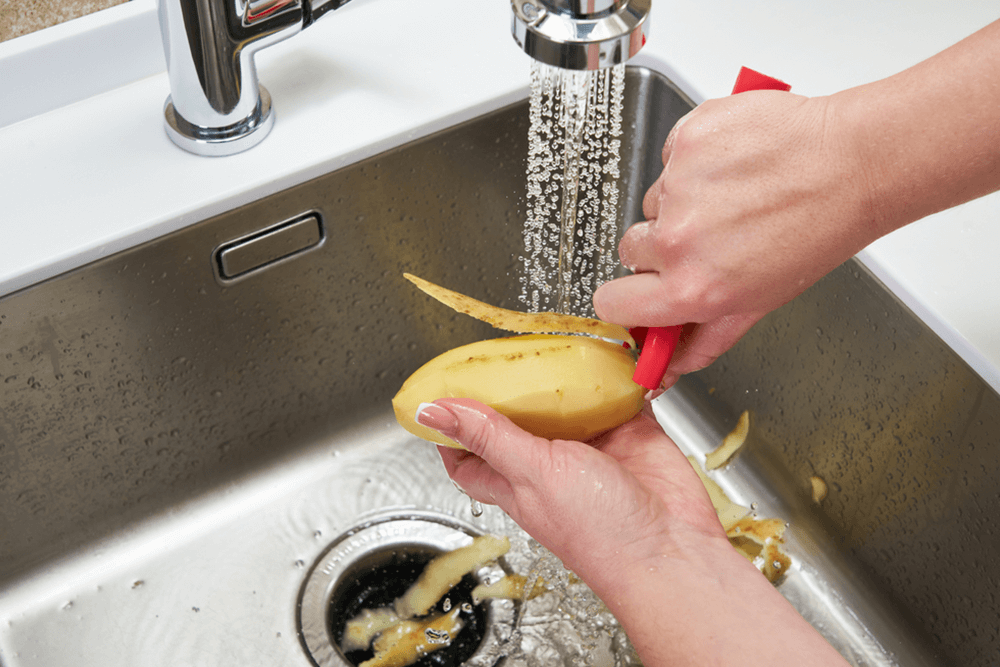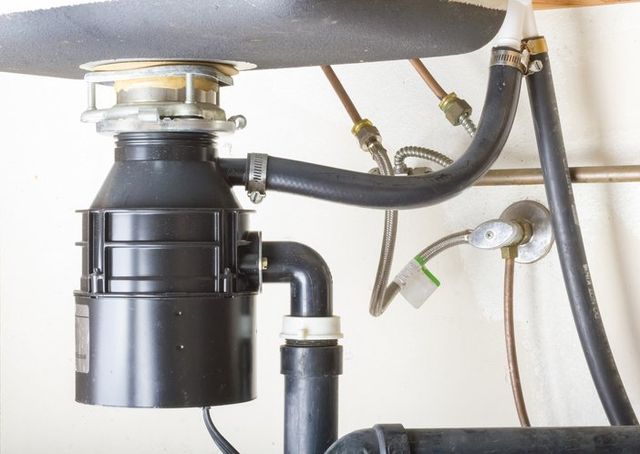Top Tips for Fixing a Leaking Waste Disposal Unit
Top Tips for Fixing a Leaking Waste Disposal Unit
Blog Article
How do you really feel in relation to How to fix a pretty consistent leak from my garbage disposal?

Waste disposal unit are important kitchen home appliances that aid in disposing of food waste efficiently. However, a dripping garbage disposal can be an aggravating and messy trouble to handle. The good news is, numerous leakages can be dealt with quickly with a couple of basic steps. In this write-up, we will discuss exactly how to deal with a dripping waste disposal unit efficiently.
Introduction
Waste disposal unit are mounted under kitchen area sinks and are developed to shred food waste into smaller items, enabling it to pass through the pipes system easily. While these devices are normally dependable, leakages can take place with time because of deterioration, loose links, or damage to the unit.
Step-by-Step Overview to Dealing With a Leaking Garbage Disposal
Switch off the Power
Prior to trying any type of repairs, make sure that the power to the garbage disposal device is turned off to avoid the threat of electrical shock.
Locate the Leakage
Identify the specific area of the leak and determine the reason
Tighten Connections
Use a wrench to tighten any kind of loose connections between the disposal unit and the pipes system.
Change Seals or Gaskets
If the leak is due to used seals or gaskets, remove the old parts and change them with brand-new ones.
Patching Cracks or Openings
For cracks or holes in the disposal device, usage epoxy or a suitable patching material to seal the damaged location.
Identifying the Source of the Leak
Prior to trying to take care of a dripping waste disposal unit, it is necessary to identify the resource of the leakage. This can typically be done via visual inspection or by conducting simple examinations.
Visual Evaluation
Check the waste disposal unit unit very carefully for any type of signs of water leak. Pay attention to areas around seals, gaskets, and link points.
Examining for Leaks
One method to test for leakages is by running water with the disposal device and checking for any type of noticeable indicators of leak.
Usual Causes of Leaks in Trash Disposals
Worn Seals and Gaskets
Seals and gaskets play a critical function in avoiding water from dripping out of the garbage disposal. Over time, these parts can weaken, leading to leakages around the disposal device.
Loose Connections
The connections in between the garbage disposal and the pipes system can end up being loose gradually, causing water to leakage out throughout operation.
Splits or Holes in the Disposal System
Physical damages to the waste disposal unit, such as fractures or holes in the housing, can likewise cause leaks.
Tools and Products Needed for Fixing a Dripping Waste Disposal Unit
Before beginning the repair procedure, gather the required tools and materials, consisting of a screwdriver, flexible wrench, plumbing technician's putty, replacement seals or gaskets, and epoxy or patching material for fixing fractures or openings.
Testing the Garbage Disposal After Repair Work
As soon as the repair work is total, test the garbage disposal by running water via it to make certain that the leak has actually been solved.
Preventive Upkeep Tips to Stay Clear Of Future Leakages
To avoid future leakages, it is vital to perform regular maintenance on your garbage disposal. This includes keeping it tidy, preventing placing non-food items or difficult items down the disposal, and periodically looking for leakages or other problems.
Final thought
To conclude, taking care of a dripping waste disposal unit is a reasonably uncomplicated procedure that can be finished with standard tools and products. By following the actions described in this post and exercising precautionary maintenance, you can maintain your garbage disposal in good working problem and prevent costly repair services in the future.
What to Do About a Leaking Garbage Disposal
A leaking garbage disposal often goes unnoticed until you confront a sopping cabinet, a foul-smelling puddle, or an audible drip-drip-drip from the unit. The fix can be frustrating, too, because the leak can stem from a number of components in the system. Fortunately, with a little sleuthing, you can zero in on the leak and—depending on the exact location—stop the icky oozing and repair the component that caused it. Worst case scenario, if it turns out that the garbage disposal must be replaced, installing a new one is a reasonable do-it-yourself task for those with basic plumbing skills. Read on to keep the cash you’d otherwise hand over to a pro.
Prepare to find the leak
Prior to testing the garbage disposal for leaks, unplug it at the wall outlet and turn off the power from the breaker box to prevent electrical shock. Then insert a watertight sink stopper into your sink drain and wipe the unit dry with a clean cloth. In any handy container, mix a few drops of food coloring into a few cups of water, and pour the dyed water onto the sink stopper to help you locate the leak.
Investigate the source
the top, where the disposal meets the sink drain the side, where the dishwasher hose or main drain pipe connects to the disposal or the bottom of the unit Inspect each of these locations while gliding a light-colored rag over the unit; the dyed water will readily show on the rag and reveal the location of the leak. If a leak isn’t immediately apparent, remove the sink stopper and pour a few more cups of dyed water down the sink drain, then check for leaks again. Leaks near the top of the unit are more likely to show themselves while the sink is plugged, while side and bottom leaks are more noticeable while the sink is unplugged.
The metal sink flange that sits directly inside the sink drain is typically sealed around the top with plumber’s putty (a clay-like sealant) and then secured from under the sink with bolts. If the plumber’s putty deteriorates, or the bolts loosen, the flange can no longer form a watertight seal between the sink drain and the disposal—which could cause a leak at the top of the unit.
To reseal the leaky flange, you must first detach the garbage disposal. Start by loosening the screws securing the main drain pipe to the disposal, then loosen the screws in the metal clamp securing the dishwasher hose to the disposal and detach the drain pipe and dishwasher hose from the disposal. Loosen the screws in the mounting ring that connects the disposal to the metal mounting assembly beneath the sink, then pull down the disposal and carefully set it on a clean, dry surface. Loosen the bolts in the mounting assembly with a wrench, then pull down the mounting assembly and set it near the disposal.

I recently found that article on Why Is while doing a lookup on the web. Enjoyed our review? Please share it. Help others check it out. We take joy in reading our article about How to fix a pretty consistent leak from my garbage disposal.
Call Today Report this page